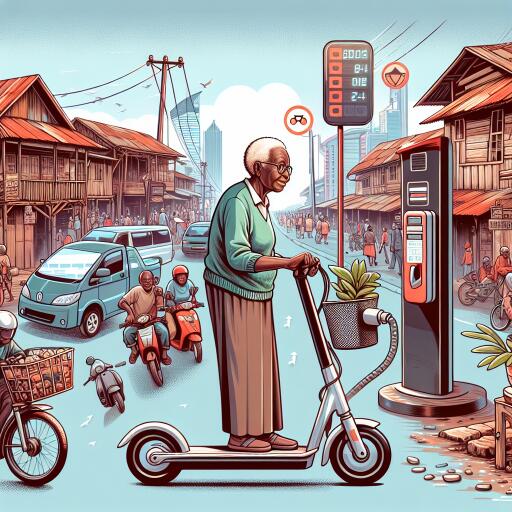Kenya is making significant strides in integrating electric mobility into its transportation system, with the goal of mitigating strain on its aging power transmission network. As the country moves towards a more sustainable and reliable energy sector, the government identifies the shift towards electric vehicles (EVs) as a key strategy.
The phenomenon of electricity curtailment, which involves any action taken to reduce the amount of energy generated within a system to balance between demand and supply, is being tackled head-on. This measure is particularly aimed at reducing the frequency of blackouts stemming from overloading issues within the transmission network. The Ministry of Transport has disclosed that the daily amount of electricity curtailed, roughly estimated at 1,357 megawatt hours (MWh), could sufficiently power around 7,000 electric buses. Each of these buses, equipped with a battery capacity ranging from 180kWh to 200 kWh, could cover a distance of over 200 kilometers.
Data from the Energy and Petroleum Regulatory Authority (Epra) for the period July 2022 to June 2023 highlighted that an aggregate of 495,437MWh of energy was curtailed, averaging to the mentioned 1,357MWh daily. The National E-Mobility Policy elaborates that e-mobility can leverage this gap created by curtailment, especially by charging electric vehicles during off-peak hours, predominantly at night.
Electric mobility is not only seen as a means to alleviate power transmission woes but also as an avenue for Kenya Power to safeguard its network against the rigors of overload. Incidents of national blackouts, including a notable one in November 2023, were attributed to the network’s inability to cope with demand, highlighting the urgency of transitioning to more resilient and sustainable energy solutions.
In alignment with environmental goals, the Ministry of Transport is keen on proliferating electric vehicles to reduce the carbon footprint resulting from the use of fossil fuels. This policy is part of a broader government initiative targeting to make five percent of all new vehicle registrations in Kenya electric. However, reaching this ambitious target might be challenging considering the current baseline; as of February this year, the country had around 1,350 electric vehicles, inclusive of three-wheelers. This figure is anticipated to climb by year-end as awareness and infrastructure for electric vehicles grow.
Contributing to this momentum are local electric mobility startups such as BasiGo and the Swedish-Kenyan technology firm Roam, which have been instrumental in deploying electric buses across city routes. Since last year, these companies have put at least 20 electric buses into operation, responding to the increase in demand for cleaner transportation options. Moreover, the rise in electric cars used by ride-hailing services like Uber and Bolt signifies a growing acceptance and preference for electric mobility among the public.
As Kenya continues to bet on electric vehicles to address its energy and environmental challenges, the journey towards a greener and more efficient transportation system is well underway. The integration of electric mobility not only promises to protect the aging power system but also sets the stage for a sustainable future, aligning with global efforts to combat climate change and reduce dependency on fossil fuels.
